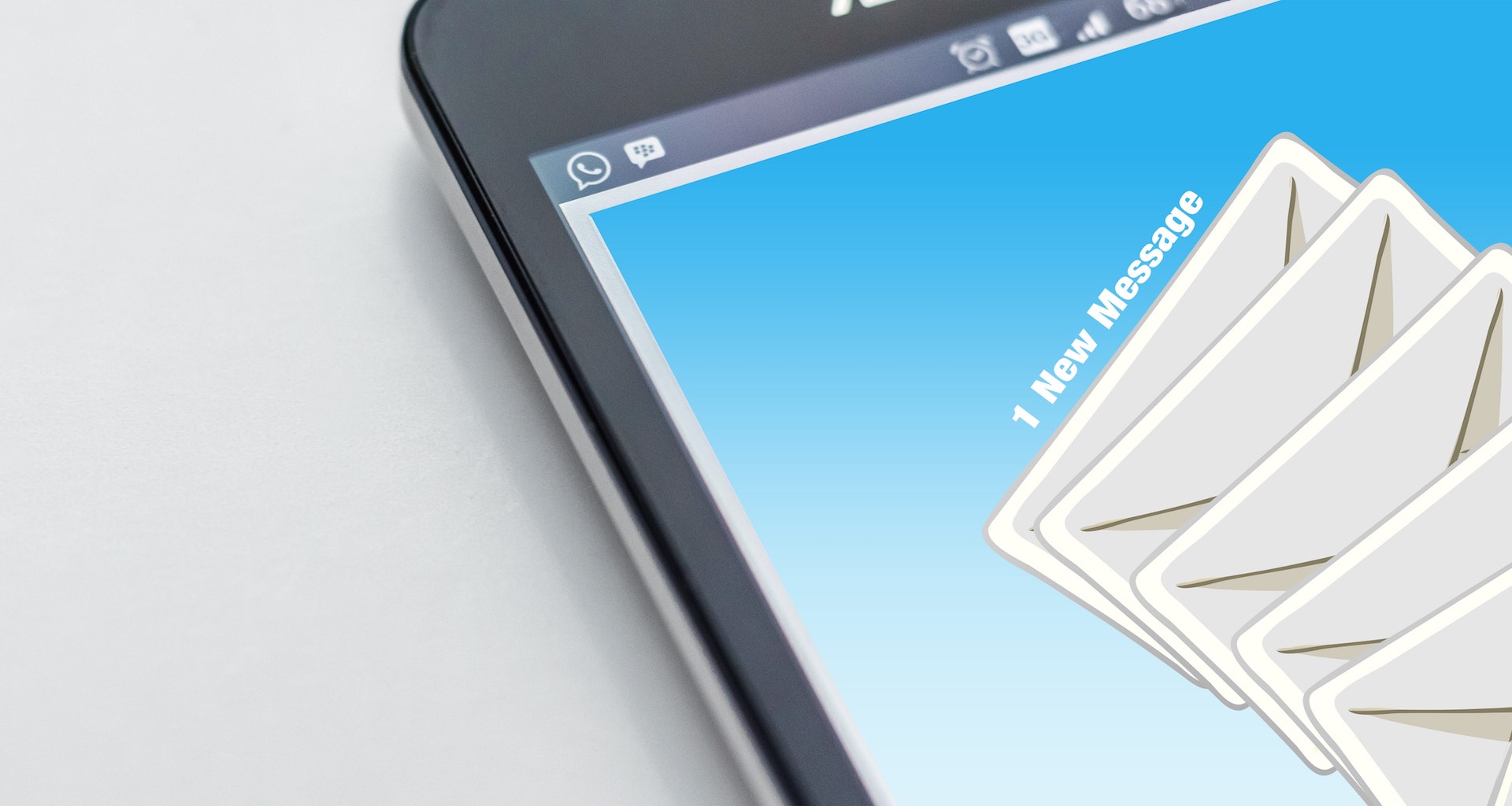9 common email mistakes (and how to avoid them)

You’ve just hit send, only to realise that there’s a massive typo in the subject line! It’s the thought that many marketers dread, and some of us have even experienced it ourselves.
As we send more and more marketing emails and as deadlines become increasingly tight, there is a higher chance of mistakes happening. Luckily mistakes like the one mentioned above are easily avoidable, when you know what to look out for.
We’ve put together a list of some of the most common email marketing mistakes we’ve seen – maybe you’re even guilty of a few? Read on to find out more, and how these can be avoided.
What is email marketing?
Email marketing, also know as electronic direct marketing or EDM, is the use of electronic mail for the purpose of marketing communication directly to contacts.
1. Poor planning
Many people will be able to tell very quickly when they’ve received an email that’s been rushed as it will often contain mistakes, or simply doesn’t make sense. Good email marketing doesn’t just happen overnight, some of the most complex email campaigns can take months of careful planning and preparation. Having a solid email marketing plan in place not only helps you stay on track, but allows you to make sure that what you're sending is relevant to your audience, and well thought-out.
 Solution: Avoid inconsistency and confusion with proper planning. Aim to plan out your emails at least a month in advance and liaise with other teams in the business to make sure you’re communicating important messages and promotions. Make use of a content calendar to make the process as easy as possible!
Solution: Avoid inconsistency and confusion with proper planning. Aim to plan out your emails at least a month in advance and liaise with other teams in the business to make sure you’re communicating important messages and promotions. Make use of a content calendar to make the process as easy as possible!
2. No value to the recipient
Even if an email seems beneficial to the business, it may not be appropriate for all of your contacts. If a customer hasn’t purchased from you for over a year, it’s probably not suitable to email them weekly deals. It may be better to reach out to that customer to see why they aren’t purchasing. Maybe you’ve stopped stocking a particular product they like? Perhaps they had a bad experience?
Solution: Your customers are at the heart of everything you do so before hitting send, carefully think about the value the recipient will get from your email. Will they be able to understand why they’re receiving it? What is the benefit for them? If there is no clear benefit to the recipient you may want to re-think sending altogether.
Recommended article: How to build an email marketing list >>>
3. Too much ‘fluff’
How do you generally read your emails? Do you read them word for word or are you more of a skim reader? Many of us can agree with the latter on this one which means emails that are too long, simply won’t cut it. The average human attention span is only 8 seconds, that’s shorter than a goldfish! This is even more of a reason to get rid of unnecessary content, or “fluff” as we like to call it.
Uber sent a pretty clever email that showcased how you can still convey the same message with less text. They included all of the text in the email, but greyed out anything that wasn’t essential in getting the message across. The end result – we still understood what they were trying to say, it just didn’t take as long to get there!
 Solution: The key phrase here is “less is more”. Have a thorough read of your email copy to make sure you’re only including essential information that provides value to the reader. If you find your email looks too long, have another member of your team take a read.
Solution: The key phrase here is “less is more”. Have a thorough read of your email copy to make sure you’re only including essential information that provides value to the reader. If you find your email looks too long, have another member of your team take a read.
4. Typos
So you’ve spent a long time putting together your email and it’s looking perfect! You hit send and then someone points out the typo… Typos are a common mistake we see frequently in emails, but also something that is so easily avoidable!
Solution: Review, review, review! Even if you think your email is prefect (see what we did there), check and check again. Still think you’re ready to send? Get someone else to check it just in case. There’s nothing worse than seeing that the main CTA telling people to “buy now” has been written as “byu now”.
5. No clear call-to-action
 The main point of a marketing email is to get the reader to take a specific action, whether that be to purchase an item, or read the latest newsletter. If your call-to-action (CTA) does not stand out, or there’s simply too many of them, your reader will get confused and could potentially just delete the email.
The main point of a marketing email is to get the reader to take a specific action, whether that be to purchase an item, or read the latest newsletter. If your call-to-action (CTA) does not stand out, or there’s simply too many of them, your reader will get confused and could potentially just delete the email.
Solution: Try to stick with one main CTA in your email that not only stands out, but makes sense. If you need to have multiple CTAs make sure you still have one main CTA and the remainder are secondary CTAs e.g. hyperlinked text instead of a button. You can find more helpful tips for CTAs here.
6. Not segmenting your database
Just because you have a large number of contacts to email market to doesn’t mean you should, especially not all the time. Even if the content you’re promoting is highly valuable, it doesn’t necessarily need to go to everyone. E.g. if you’re running a free seminar that you think many of your contacts will find value in, you probably don’t need to send everyone a reminder to register. Why not send to only those that haven’t registered yet?
Solution: Think carefully about the main message of your email and if it’s appropriate to send to all contacts, if not who should you be sending to? Clearly define who should be receiving the email and then from there, segment your database if required.
7. Not testing before you send
 There is nothing worse than receiving a broken email. From emails not rendering well on mobile, to links not working and images not loading, there’s a lot to look out for before you send! How your email appears across mobile devices is particularly important as almost half of all email opens are now on these devices.
There is nothing worse than receiving a broken email. From emails not rendering well on mobile, to links not working and images not loading, there’s a lot to look out for before you send! How your email appears across mobile devices is particularly important as almost half of all email opens are now on these devices.
Solution: An easy way to pick up on anything that could potentially break in an email, is to test before sending. Many email marketing platforms like HubSpot now offer their own testing functionality so you can see how your email will appear across different email clients. There are also very good email testing software applications on the market like Litmus so there really is no excuse to not test your emails before you send!
8. Email frequency
Emailing your contacts too often can not only be very annoying for some people, but could also affect your unsubscribe rate. Email marketing is just one channel your contacts may be contacted through, so it’s important to consider other areas of the business they may be receiving emails from. Also consider what lifecycle communications are set up, and the emails your contacts could be receiving because of this.
Solution: Clearly define how often you want to email your contacts whether that be once a week or once a month for example. If you have certain contacts in lifecycle automations, consider whether it’s appropriate to send them other marketing communications. You may want to exclude them if they’re going to be contacted too much. It’s all about relevancy, and what you think your contacts will find value in at that particular time.
9. Ignoring email results
.jpg?width=1920&name=STOCK-IMAGE--STATISTICS%20(1).jpg)
One of the worst things you can do is pay no attention to email results after sending. Open, click-through, and unsubscribe rates are very good indicators as to whether your email has done well, and been received well by your contacts. Failure to evaluate results could see you sending emails that your contacts don’t enjoy, which could in turn see them unsubscribe and disengage with your business.
Solution: Make sure you check every email after you send it, whether that be a week later or as part of your monthly marketing report. How did it perform? If stats are low, why is that so? Think about the content in the email and if it was appropriate, maybe your contacts simply weren’t interested in the main message of that particular email? Compare an underperforming email to one that was successful – what are the differences?
Want to know what else you can be doing to avoid email marketing mistakes? Check out our email marketing checklist!
Download your free guide to Smarter SEO
Good SEO can mean the difference between your business being found, or you being lost in the growing mass of online resources. This guide is designed to help you rise above your competition.
Download now






